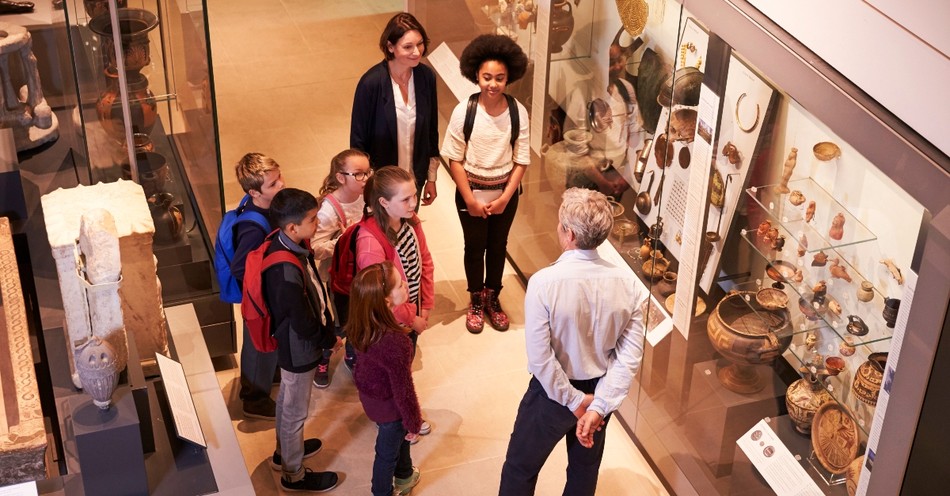One video about biblical archaeology reminded me that small things and ordinary people have often been significant to the Lord’s story. The Bible narrative contains mostly bit players, people who come and go quickly, and even people who are never named. The accessories in their stories include the regular, easily missed stuff of every day: cloth, candles, and jugs.
Sometimes I skim over those tiny details and ordinary people and think little of them until the Lord brings them to my attention in the form of an ancient fragment or a tiny artifact. Let’s take a closer look at the small, the anonymous, and the overlooked.
The Mark of the Bullae
In the fire, which destroyed the First Temple in Jerusalem, many artifacts were destroyed. Others were hardened and preserved, such as bullae.
Steve Rudd explains that “the bullae, made of fingernail-sized lumps of soft clay shaped as flat disks, were affixed to a string binding a papyrus document and then stamped with a seal. To open and read the document, the bullae sealing had to be broken in order to separate it from the string.”
Why are these hardened seals important to biblical archaeologists? They help to affirm the historicity of the Bible.
Thanks to differing beliefs in the timelines of certain events and cultures, not everyone agrees (for example) on the dates of events such as the Exodus and the Battle of Jericho.
Some historians and skeptics simply argue that certain people did not exist, particular events did not occur, and that the Bible is merely an epic fantasy story.
But the discovery of bullae in the remnants of the City of David, bearing the names of individuals featured in the Bible, offers strong physical evidence of the reliability of Scripture.
The bullae uncovered at the ancient site feature personal names in Hebrew, such as “Gemaryahu son of Shafan, a high official at the court of King Jehoiakim of Judah who reigned on the eve of the destruction of Jerusalem by the Babylonians.”
Sometimes this sort of hard evidence works wonders on hard hearts. And it’s exciting to hold or even look at something, which was also held or beheld by an individual mentioned in the Bible.
As with the next artifact, I’m mesmerized by the generosity of the Lord to give us these little gifts even today, two thousand years after the last words of the apostles were left with us, in order to renew conversation and reaffirm the Bible’s historical accuracy.
Lydia’s Delicate Dye
Sofia Moutinho writes, “In the ancient Middle East, purple was a symbol of prestige [...]. Priests and royalty, including Kings David and Solomon, are often described in the Bible wearing clothing dyed with these extracts.”
There was a great trade in this dye and in purple cloth throughout the Middle East, and archaeologists have uncovered “the oldest example of this purple dye ever found throughout the southern Levant, dated from 1000 B.C.E.” (The Southern Levant is Israel, Palestine, and Jordan).
It’s not Lydia’s dye because the sample discovered by archaeologists was produced long before she was born, but it’s fascinating when people, trade, and other features of life in Palestine are described, and then we can use more than our imaginations to create pictures — we have physical evidence. The Bible comes to life in a sense.
Lydia, who became a follower of Christ, “was a seller of purple goods” (Acts 16:14). This amazing discovery inspired me to probe into the story of a follower of Jesus who “puts [her] wealth to good use by showing Paul and his companions’ hospitality and putting them up in her home.”
Hope Bolinger wrote an article about her, which helps us to understand her significance and the importance of finding this tiny piece of archaeological evidence in the Middle East.
Lydia embodied the selfless generosity and excellent stewardship we so long to see among wealthy Christians.
In a Few Words
While writing a series about Esther, I was stunned to think of how little space this woman had in which to make an impact for the people of Israel. He wasn’t going to give her half an hour to recite a monologue.
In a few words, she got the king’s attention; she moved him or piqued his pride: either way, she had to make each word count. The Lord’s Word continually prompts us not to dismiss the power of the Holy Spirit to do much with little because that’s all most of us have — little.
We won’t leave artifacts behind, hardly anyone will remember our names, and we don’t have much time on this earth. How do we make our powerlessness, the smallness of ourselves, count for Christ?
One who is faithful in very little is also faithful in much, and one who is dishonest in very little is also dishonest in much (Luke 16:10).
A little leaven leavens the whole lump (Galatians 5:9).
So also the tongue is a small member, yet it boasts of great things. How great a forest is set ablaze by such a small fire! (James 3:5).
“For where two or three are gathered in my name, there am I among them” (Matthew 18:20).
The small ways in which we demonstrate our faith, even in our weakness and with all of our faults, are important to our Father, and they contribute to the Kingdom work that has been assigned to us.
They demonstrate that it’s the Lord’s strength, his power, which saves. Go out and make disciples with whatever we have. With only a little bit of faith, any one of us can be used by the Spirit to begin a movement.
Not only that, but Christ is present when we gather with our friends to praise his name. He’s the same size at a mega-church as he is when one individual stops to pray with a homeless person on the side of the road.
Most of the people who experienced the events in the Bible were not politically important. They were anonymous individuals who left nothing behind because they didn’t own things that would last through the ages.
The stories of the ordinary people who used those items are rarely told around a campfire or commemorated in writing. The greatest remnant of the lives of people who adored Christ is the way they spread faith, hope, and love wherever they went.
You can’t touch or see those things, but they are real. That doesn’t mean those people didn’t exist. I don’t need to see their tools or their laundry facilities in order to know that they built homes and they wore clothes.
But I do forget that so many of the people mentioned in the Bible were like me, just normal. I forget that they mattered to God just as I matter to God, and so does each person reading this.
We might be small and wonder, “What can God do with me? Why even bother to pray, or to speak about Jesus, when I’m too weak to make a difference?” Well, it’s clear that “small” can be mighty and significant in the hands of the Lord.
The Anonymous Faithful
I won’t leave anything significant behind. But then, the most important legacy Christ left is not visible to the eye — he was no earthly king but our Heavenly King. There are no temporal riches associated with Jesus.
Yet, he changed my life and the lives of millions of people. I can’t show you my faith or tell you what color it is. You can’t catalogue, weigh, or measure Christ’s love, mercy, and grace and display it in a museum. Christ is everything, and nothing matters more.
For further reading:
3 Archaeological Discoveries that Support Biblical Events
Is the Bible Considered a Historical Text?
Why Is Reading the Bible in Context Important?
Photo Credit: ©iStock/Getty Images Plus/monkeybusinessimages





